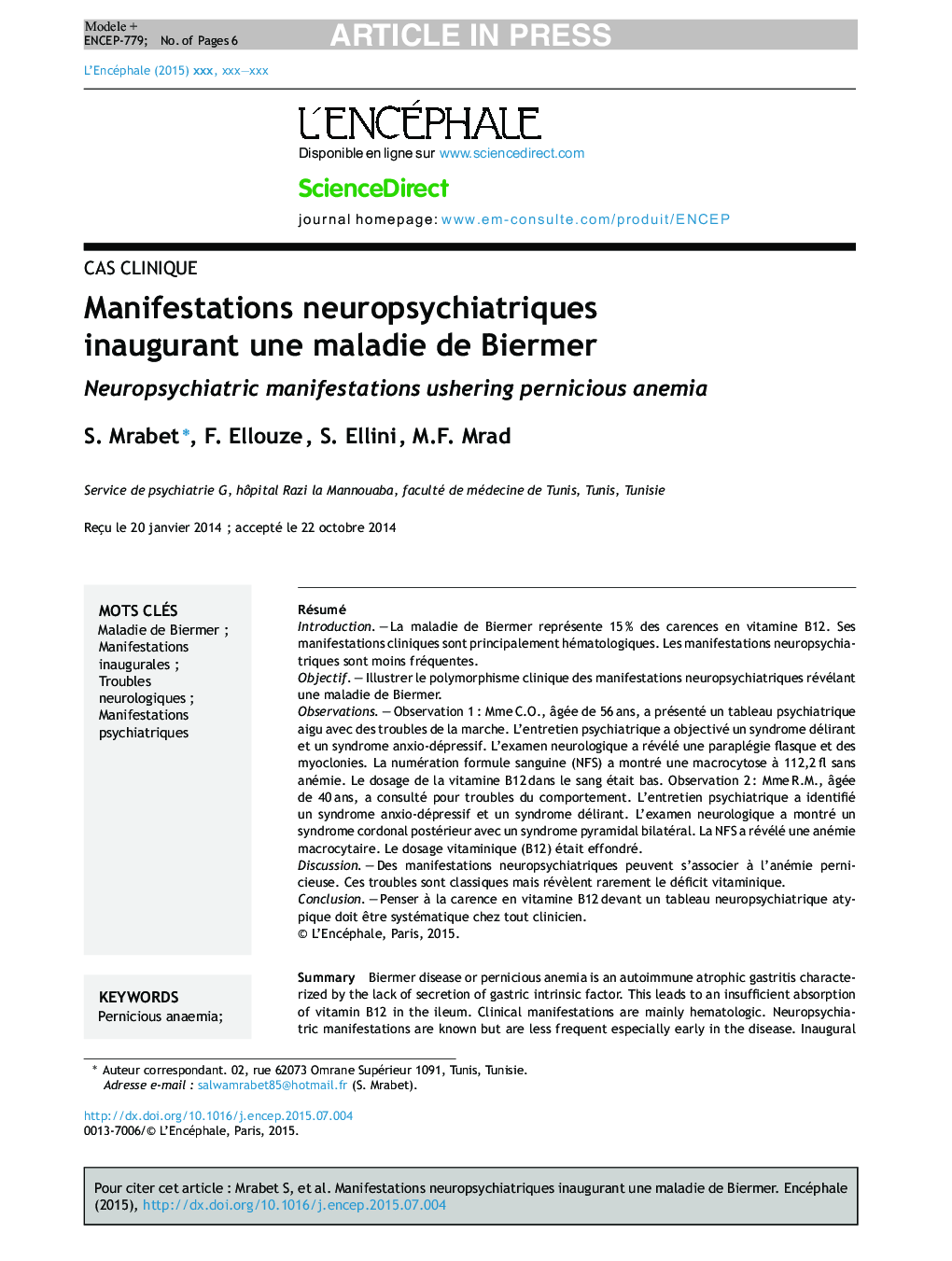| Article ID | Journal | Published Year | Pages | File Type |
|---|---|---|---|---|
| 4181606 | L'Encéphale | 2015 | 6 Pages |
Abstract
Biermer disease or pernicious anemia is an autoimmune atrophic gastritis characterized by the lack of secretion of gastric intrinsic factor. This leads to an insufficient absorption of vitamin B12 in the ileum. Clinical manifestations are mainly hematologic. Neuropsychiatric manifestations are known but are less frequent especially early in the disease. Inaugural neuropsychiatric arrays are rare and various thus making diagnosis difficult. In this article, we report through two clinical cases different neuropsychiatric manifestations revealing pernicious anemia. Mrs. C.O., aged 56, presented after surgery for gallstones, an acute psychiatric array associated with gait disorders. She had no history of neurological or psychiatric problems. The psychiatric interview revealed delirious syndrome, depressive symptoms and anxiety. Neurological examination noted a flaccid paraplegia with peripheral neuropathic syndrome and myoclonus in the upper limbs. At the full blood count, a macrocytosis (VGM: 112.2fl) without anemia was found. The level of vitamin B12 in the blood was low. Cerebro-spinal MRI was suggestive of a neuro-Biermer and showed hypersignal in the cervical cord on T2-weighted sagittal section. In axial section, hypersignal appears at the posterior columns in the form of V. There were no brain abnormalities. A sensorimotor axonal polyneuropathy was diagnosed. The patient received vitamin B12 intramuscularly for ten days associated with neuroleptic treatment. Mrs. R.M., aged 40, was brought to the psychiatry consultation for acute behavioral disorders progressively worsening over a month. An anxiety syndrome, depressive syndrome and delirious syndrome were identified. Neurological examination showed a posterior cordonal syndrome with quadripyramidal syndrome. Full blood count showed a macrocytic anemia. Serum B12 level was collapsed. Cerebro-spinal MRI was normal. She received vitamin B12 with clinical and biological improvement. Features of pernicious anemia vary according to studies and age range. Digestive and hematological manifestations are well known. Neurological and psychiatric manifestations of pernicious anemia were also described in the early literature. They can be the initial symptoms or the only ones. However, inaugural neuropsychiatric features are often unrecognized. The most common psychiatric symptoms were depression, mania, psychotic symptoms, cognitive impairment and obsessive compulsive disorder. Neurological involvement includes mainly combined spinal sclerosis, peripheral neuropathy and dementia. Cerebellar ataxia and movement disorders are reported less often. Severity of neuropsychiatric features and therapeutic efficacy depends on the duration of signs and level of B12 deficiency. Macrocytic anemia may lack. Neuropsychiatric manifestations could be isolated or be the first manifestation of vitamin deficiency and occur without any hematological or gastrointestinal context. Pernicious anemia and serum B12 assay should be discussed in all patients with organic mental disorders, atypical psychiatric symptoms and fluctuation of symptomatology. Nevertheless, B12 level could be normal in genuine pernicious anemia diseases and macrocytic anemia may lack. Substitutive vitaminotherapy is required when diagnosis is strongly suspected and etiologic assessment is negative.
Keywords
Related Topics
Health Sciences
Medicine and Dentistry
Psychiatry and Mental Health
Authors
S. Mrabet, F. Ellouze, S. Ellini, M.F. Mrad,
